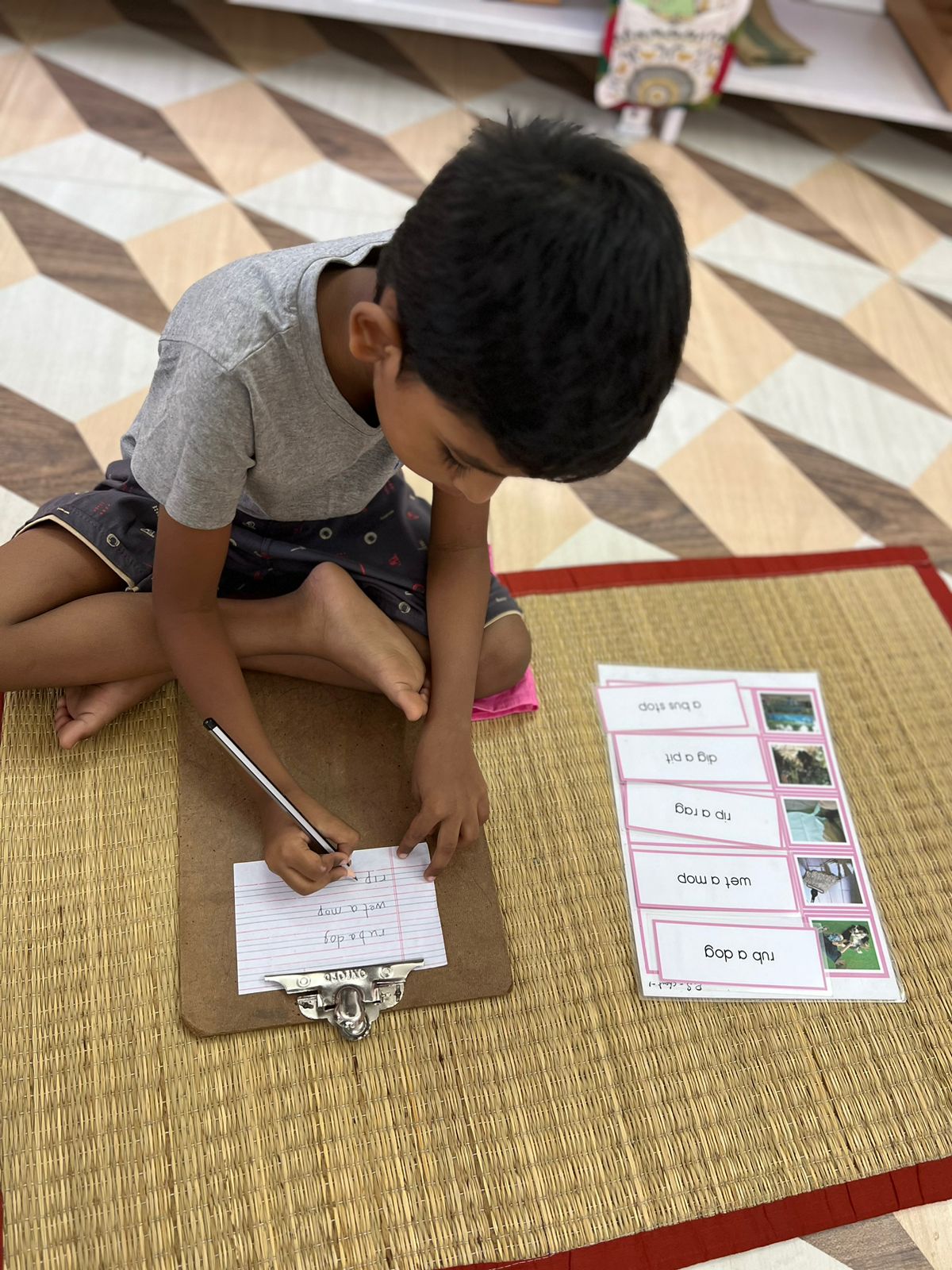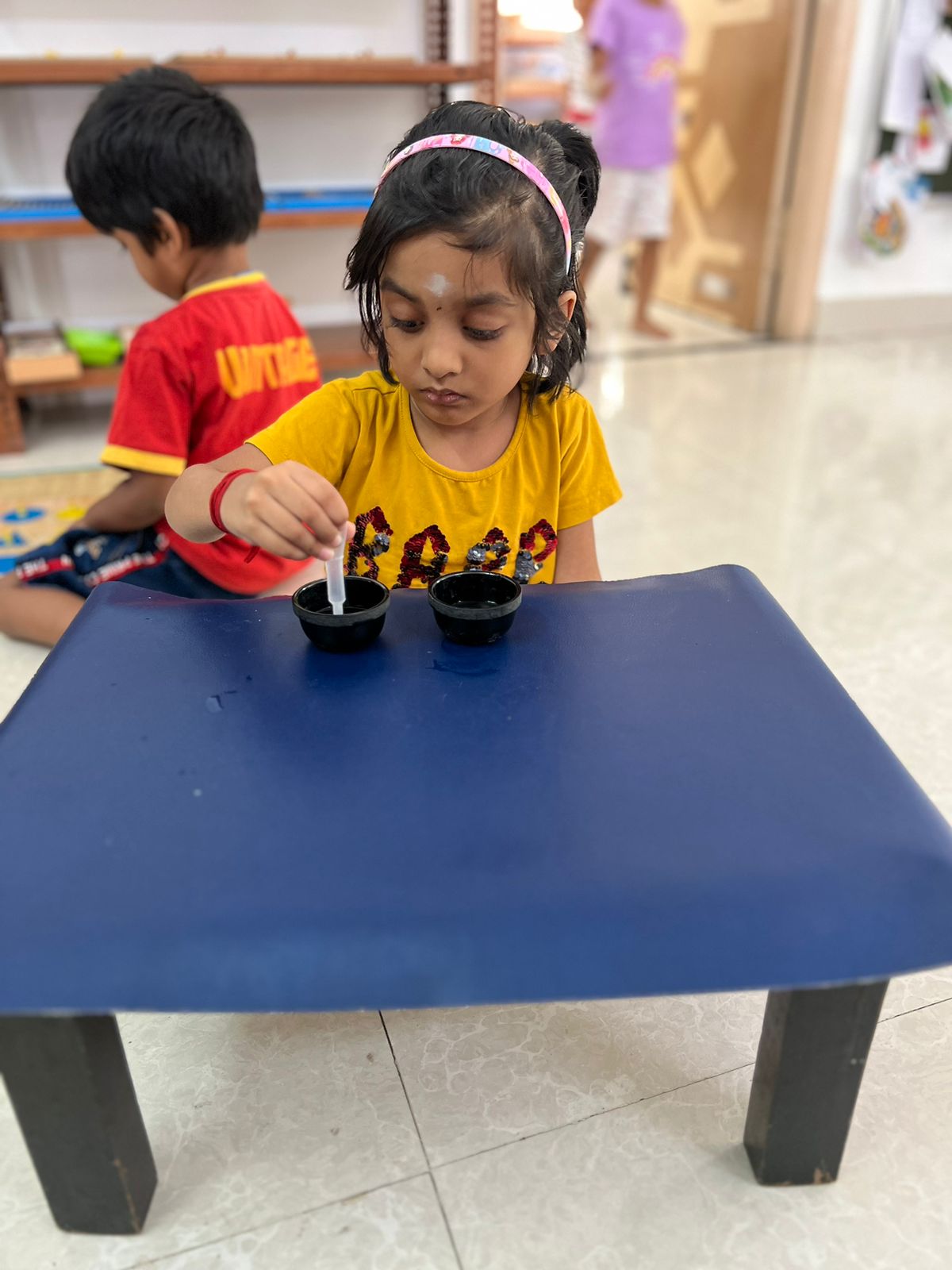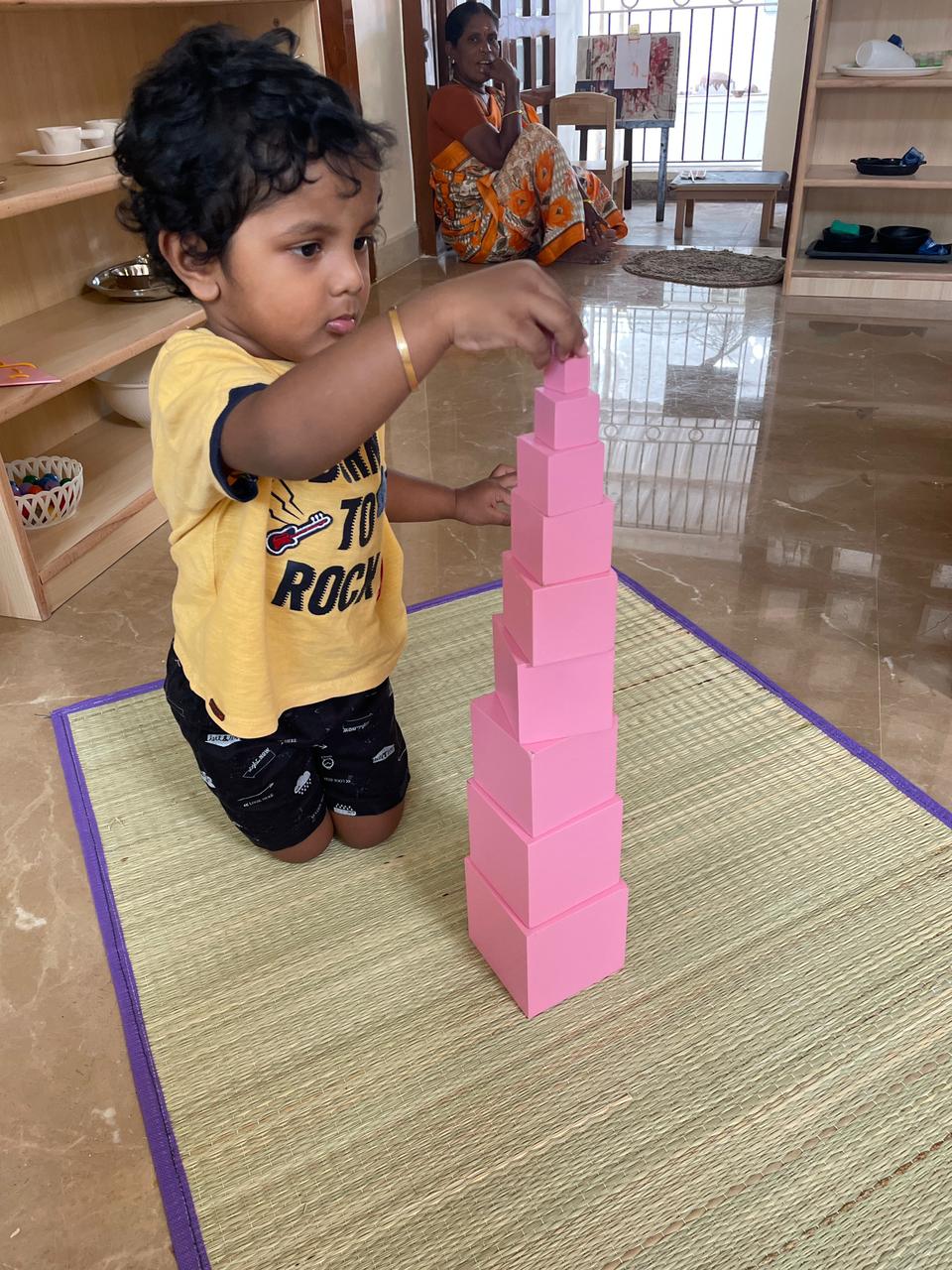How and when does a child start writing at Chisel Montessori School?
Aug 22, 2023 by Chisel Montessori School




Writing requires the physical capability to hold and control a pencil. However, introducing a writing tool prematurely can lead to discomfort and frustration. At Chisel Montessori School, our approach is all about setting the child up for success. Instead of handing a pencil and paper to a three-year-old and asking them to start practicing, we invest this valuable time in providing a range of experiences that prepare the child's hand for a successful and enjoyable writing journey right from the beginning.
This process begins with practical life activities. Beyond fostering independence and involving children in daily tasks, practical life works hold a deeper purpose. Most practical life activities in the toddler and primary classes (and beyond) are crafted to enhance fine and gross motor skills in the hands and arms. A robust pincer grasp is a fundamental precursor to writing. Tasks like buttoning, polishing, and manipulating small objects contribute to and reinforce the pincer grasp. Carrying water pitchers, sweeping, and scrubbing foster gross motor movement that strengthens arm and hand muscles. This strengthening process translates into increased comfort during writing and better control over pencils.
Even minor aspects of practical life presentations, such as teaching a child to scrub a table from top to bottom and left to right, play a role in setting the pattern for English language writing. Similarly, sensorial materials also contribute to motor skill development. For instance, lifting the thickest prism of the brown stair and using the pincer grasp for a puzzle map piece exercises arm and hand muscles.
Once practical life and sensorial materials have improved fine motor control and hand strength, a new tool enters the scene—the metal insets. These simple yet creative tools prepare the hand specifically for writing. They allow children to trace shapes and frames, coloring them in. With various stages to this activity, attention to detail is heightened, and fine motor skills are continually challenged. This work persists throughout the primary years, fostering ongoing improvement in handwriting skills.
Further hand preparation is facilitated by the sandpaper letters. This work entails tracing the shape of each letter with two fingers, priming both brain and hand for writing. When it's observed that a child's hand is ready, they're guided to practice writing these letter symbols on a chalkboard.
Creating an environment that holistically readies young minds and hands for the journey of writing is the essence of Montessori education. At Chisel Montessori School, we're committed to fostering this unique preparation process, ensuring every child's transition into the world of writing is seamless and enjoyable.
For more insights into our Montessori approach and educational philosophy, stay tuned to our blog.
